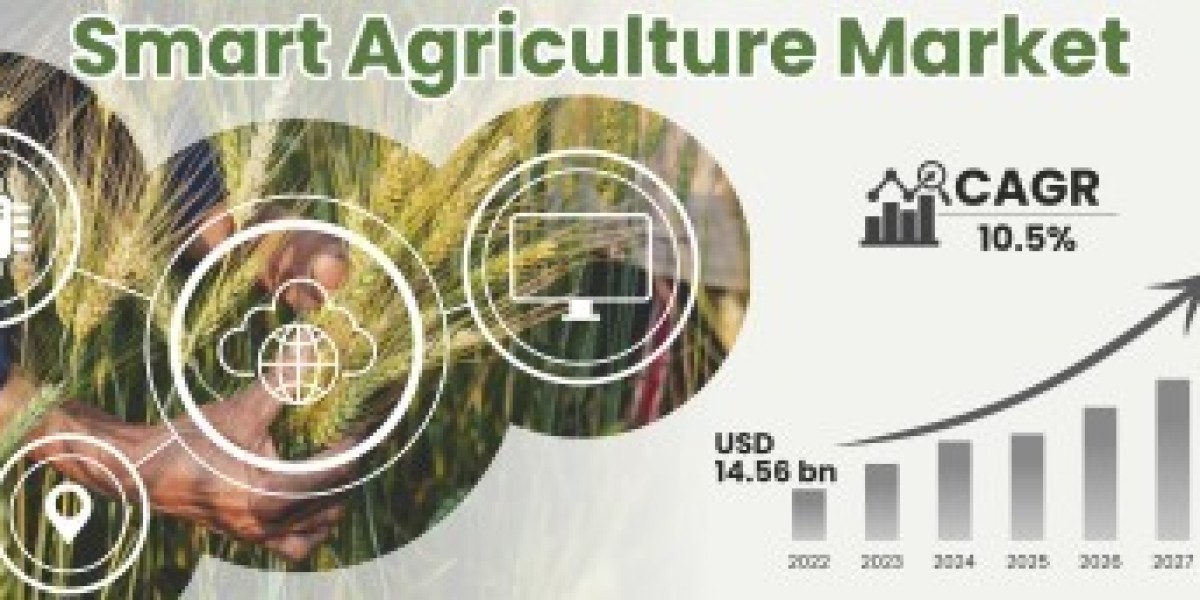In recent years, the agricultural sector has undergone a significant transformation driven by the integration of advanced technologies, giving rise to what is known as "smart agriculture." This innovative approach leverages various technological advancements such as the Internet of Things (IoT), artificial intelligence (AI), big data analytics, and robotics to optimize farming practices, increase productivity, and promote sustainability.
"The global smart agriculture market is expected to grow from USD 14.56 billion in 2022 to USD 29.34 billion by 2029 at a CAGR of 10.5% during the forecast period".
Understanding Smart Agriculture
Smart agriculture, also referred to as precision farming, involves the use of technology to monitor and manage crops and livestock with unprecedented precision. This approach aims to minimize resource usage while maximizing yield, thereby addressing some of the critical challenges faced by the agricultural sector, including climate change, population growth, and resource scarcity.
Key Technologies Driving Smart Agriculture
Internet of Things (IoT):
IoT devices, such as sensors and drones, play a crucial role in smart agriculture. These devices collect real-time data on soil moisture, temperature, humidity, and crop health. This data is then transmitted to farmers, enabling them to make informed decisions about irrigation, fertilization, and pest control.
Artificial Intelligence (AI) and Machine Learning (ML):
AI and ML algorithms analyze the vast amounts of data collected by IoT devices to provide actionable insights. For instance, AI can predict weather patterns, detect diseases in crops early, and recommend the optimal times for planting and harvesting.
Big Data Analytics:
The agricultural sector generates massive amounts of data daily. Big data analytics helps in processing and analyzing this data to identify trends and patterns. This enables farmers to implement data-driven strategies for crop management, improving efficiency and productivity.
Robotics and Automation:
Robotics and automation are revolutionizing various farming tasks, from planting and weeding to harvesting. Autonomous tractors, robotic harvesters, and drones equipped with advanced imaging technologies are enhancing precision and reducing labor costs.
Benefits of Smart Agriculture
Increased Efficiency: By utilizing precise data and automation, farmers can optimize resource usage, reducing waste and lowering costs.
Enhanced Crop Yields: Smart agriculture technologies enable better monitoring and management of crops, leading to higher yields and better quality produce.
Sustainability: Efficient use of water, fertilizers, and pesticides minimizes environmental impact, promoting sustainable farming practices.
Risk Mitigation: Advanced forecasting and early disease detection help farmers mitigate risks associated with weather and pests.
Challenges and Future Prospects
Despite its promising potential, smart agriculture faces several challenges, including high initial costs, technological complexity, and the need for robust data infrastructure. Additionally, there is a learning curve for farmers to adopt and effectively use these new technologies.
Looking ahead, the future of smart agriculture is bright. Continuous advancements in technology, combined with increasing awareness of sustainable practices, are expected to drive the widespread adoption of smart farming. As these technologies become more affordable and accessible, even small-scale farmers will be able to reap the benefits, leading to a more resilient and productive agricultural sector.
In conclusion, smart agriculture represents a paradigm shift in farming, harnessing the power of technology to meet the demands of the 21st century. By embracing these innovations, the agricultural industry can ensure food security, promote sustainability, and improve the livelihoods of farmers worldwide.
To read in detail about the market dynamics, Register Here: https://www.stratviewresearch.com/Request-Sample/3338/smart-agriculture-market.html#form



